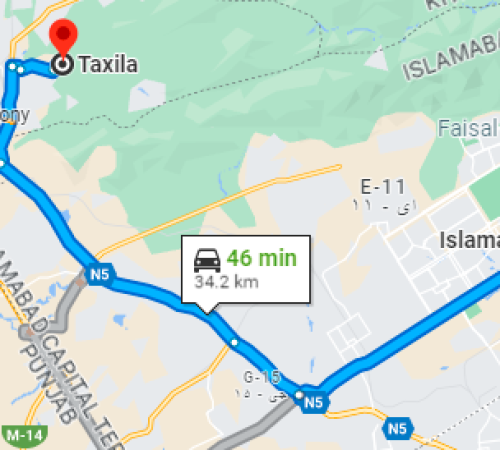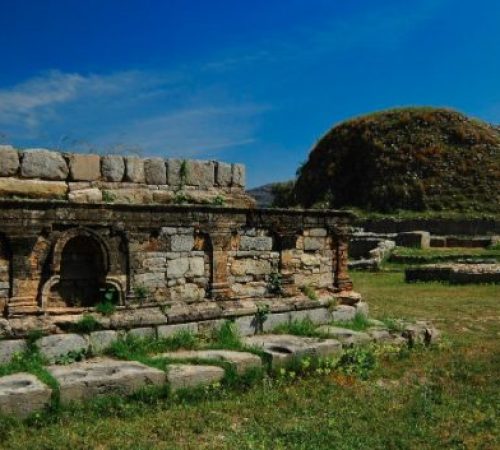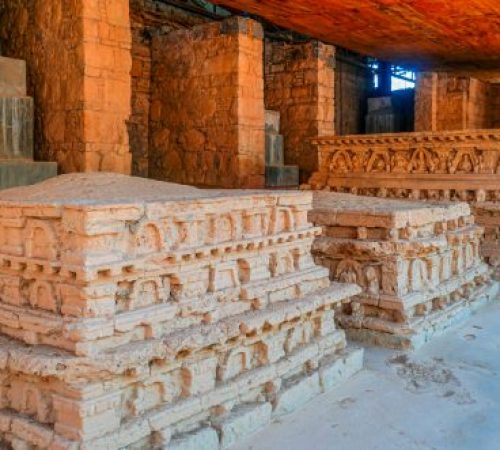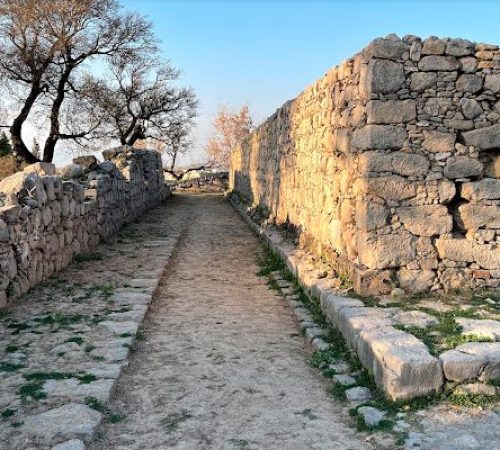Taxila or Takshashila is a city in the Potohar region of Punjab Pakistan.
The Taxila is approximately 34km Away from Islamabad via Margalla Avenue.
Explore a Mesolithic cave and the archaeological remains of four early settlement sites, Buddhist monasteries, and a Muslim Mosque and madrassa. Taxila became a noted center of learning (including the religious teachings of Historical Vedic Religion and Buddhism) at least several centuries BCE, and continued to attract students from around the old world until the destruction of the city in the 5th century
Taxila or Takshashila is a city in the Pathovar region of Punjab, Pakistan. Located in the Taxila Tehsil of Rawalpindi District, it lies approximately 25 kilometers northwest of the Islamabad–Rawalpindi. Taxila is famous for ruins of several settlements, the earliest dating from around 1000 BCE. It is known for its collection of Buddhist religious monuments, including the Dharmarajika stupa, the Jaulian monastery, and the Mohra Muradu monastery.
The ruins of Bhir Mound, the earliest city site of ancient Taxila, are located between the railway station and the Tamra nala and are partly occupied by the Taxila Museum Complex in the southern side. According to local tradition, Bhir Mound was the most ancient of all the sites at Taxila, and this tradition has been fully confirmed by excavations, which show that this city had already been destroyed thrice and rebuilt before the Indo-Greeks founded the new capital, now known as Sirkap.
Bhir Mound has been included in the UNESCO World Heritage List in 1980 under the convention concerning the protection of the world cultural and natural heritage.
Visit Taxila Museum
Taxila Museum is located at Taxila. The gallery is home to a significant and wide-ranging collection of Gandharan art dating from the 1st to the 7th centuries CE. Most objects in the collection were excavated from the ruins of ancient Taxila.
Taxila Museum holds one of the most significant and comprehensive collection of stone and stucco sculptures from the Buddhist Art of the Gandhara Civilization. The museum is located in the middle of the numerous archaeological sites scattered around the Taxila region and boasts a rich collection of Gandharan artifacts.
The Dharmarajika Stupa, also referred to as the Great Stupa of Taxila, is a Buddhist stupa near Taxila, Pakistan. It was built over the relics of the Buddha by Ashoka in the 3rd century BCE.
The main stupa is built in a circular plan, with a 131 feet wide diameter and a 45 feet high drum. The stupa is constructed in solid masonry and has a raised terrace around its base which was ascended by four flights of steps.
It was built in the fifth century perhaps as a stronghold for the thousands of monks in Taxila Valley. About 500 meters of the fort wall still stands. Part of the monastery is also in good condition
This Giri fort and Buddhist temple were erected by Buddhist zealots of the lake Kushan period of Gandhara civilization of the 1st – 5th century, from Asoka’s successors. This holy site luckily survived the marauding crowd of Hun temple destroyers in the 5th century. The glen of Giri is located 8 km northeast of Taxila, at the foot of Margalla. It is approached through a rough torrent bed near two villages named Khurram Gujar and Khurram Paracha.
The remains of Giri Fort are perched on the hilltop, with spring water falling within it. The fort was built in the 5th century by Buddhist monks. Later, it was used by Sultan Masud, son of Sultan Mahmud of Ghazni.
Jaulian is a ruined Buddhist monastery dating from the 2nd century CE, located in Taxila, in Pakistan. Jaulian, along with the nearby monastery at Mohra Muradu, form part of the Ruins of Taxila a collection of excavations that were inscribed as a UNESCO World Heritage Site in 1980.
At Jaulian, the main stupa features a large rectangular base decorated with plaster figures and a long staircase leading to a dome. A total of twenty-seven votive stupas surrounds the main stupa and feature square bases topped by circular drums and domes.
Jandial near the city of Taxila in Pakistan is the site of an ancient temple well known for its Ionic columns. The temple is located 630 meters north of the northern gate of Sirkap. The Temple was excavated in 1912–1913 by the Archaeological Survey of India under John Marshall.
– TRANSPORTATION
– MEALS
– PHOTOGRAPHY
– SIGHTSEEING
– FIRST AID BOX




Copyright © 2025 NFA. All rights reserved.